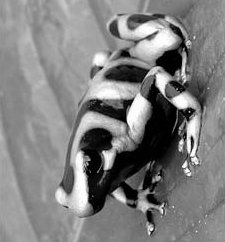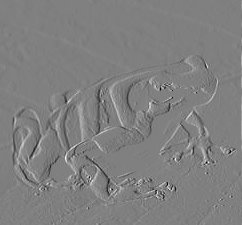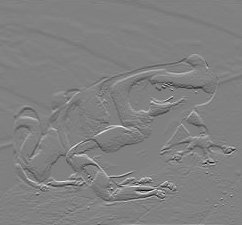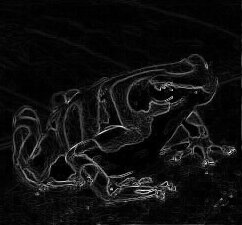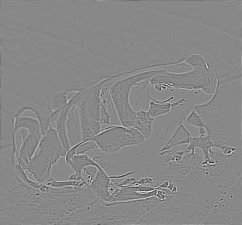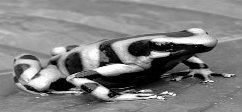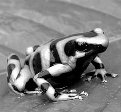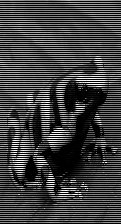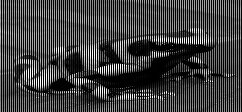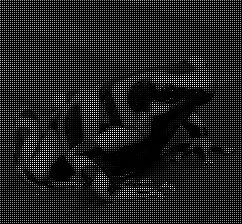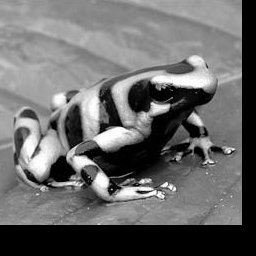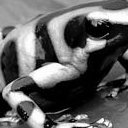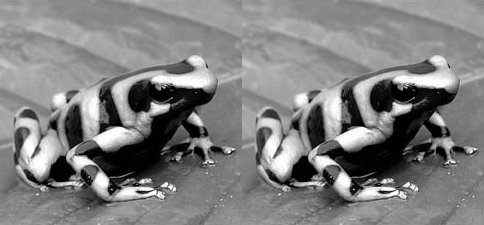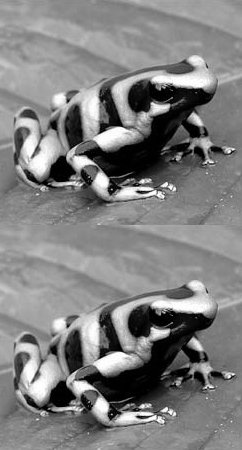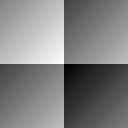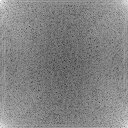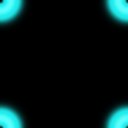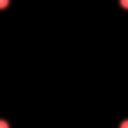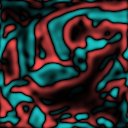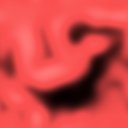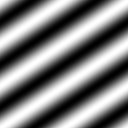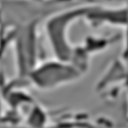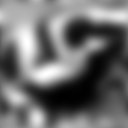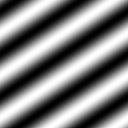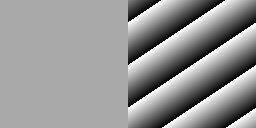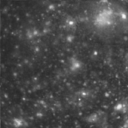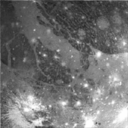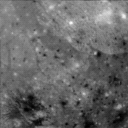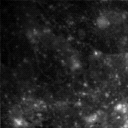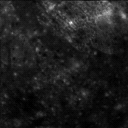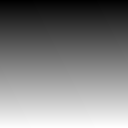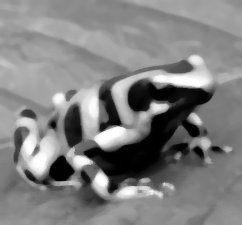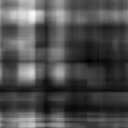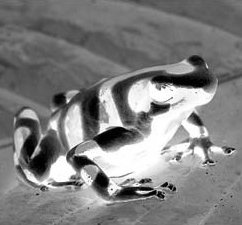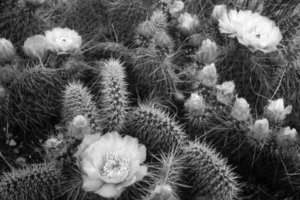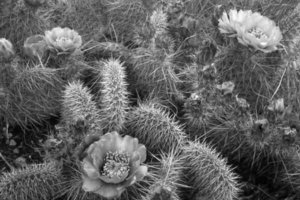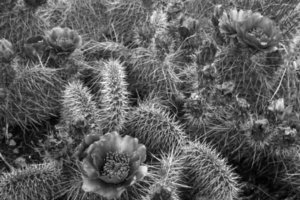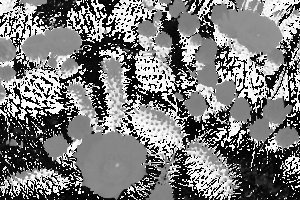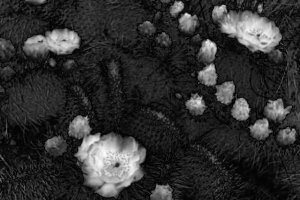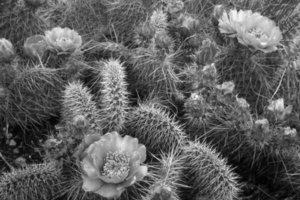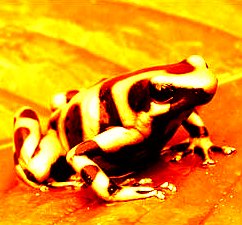To get started, import Data.Image or Data.Image.Boxed.
To use unm-hip interactively in ghci, import Data.Image.Interactive. This provides three useful functions: display, setDisplayProgram, and plotHistograms.
setDisplayProgram :: String -> Bool -> IO ()Sets the program to use when making a call to display and specifies if the program can accept an image via stdin. If it cannot, then a temporary file will be created and passed as an argument instead. By default, ImageMagick (display) is the default program to use and it is read using stdin.
*Main> setDisplayProgram "gimp" False
*Main> setDisplayProgram "xv" False
*Main> setDisplayProgram "display" True
display :: DisplayFormat df => df -> IO (Handle, Handle, Handle, ProcessHandle)Makes a call to the current display program to be displayed. If the program cannot read from standard in, a file named .tmp-img is created and used as an argument to the program.
makeImage :: Image i => Int -> Int -> PixelOp (Pixel i) -> iGiven an Int m, Int n, and a PixelOp f, makeImage
returns an Image with dimensions m x n and the Pixel value at
each (i, j) is f i j.
*Main> let grad = makeImage 128 128 (\ r c -> fromIntegral (r + c)) :: GrayImage
*Main> grad
< Image 128x128 >
*Main> display gradpii :: Complex Double
pii = 0 :+ pi
harmonicSignal :: Double -> Double -> Int -> Int -> Complex Double
harmonicSignal u v m n = exp ((2*pii) * ((u*(fromIntegral m) + v*(fromIntegral n)) :+ 0))
*Main> let signal = makeImage 128 128 (harmonicSignal (3 / 128) (2 / 128)) :: ComplexImage
*Main> signal
*Main> signal
< Image 128x128 >
*Main> display signalreadImage :: FilePath -> IO GrayImageGiven the file path to a file containing an image stored in ASCII .pgm format, readImage reads the file and returns the Image. For example,
*Main> frog <- readImage "images/frog.pgm"
*Main> display frogwriteImage :: DisplayFormat df => FilePath -> df -> IO ()Given a filename and an Image,
writeImage creates a file representing the image in ASCII .pgm format for GrayImages and .ppm for ColorImage and ComplexImage. Note: Images saved this way are normalized to integers in the range 0 to 255; this may result in loss of detail.
*Main> writeImage "frog.pgm" frogcreates a file which looks like this:
P2
242 225
255
151 151 151 151 151 150 150 149 148 147 146 145 145 142 142
143 145 148 152 156 158 159 159 159 159 157 155 152 150 153
152 151 149 149 149 149 150 149 149 149 149 149 149 149 149
149 146 144 141 138 136 133 132 136 136 136 136 136 136 136
136 139 138 138 138 137 136 136 136 135 135 136 136 137 137
138 138 138 137 138 137 138 137 138 137 135 134 134 134 138
141 147 150 149 147 143 138 134 132 131 130 129 129 130 132
134 136 137 137 137 137 138 139 142 145 147 149 145 146 150
153 156 159 161 163 156 158 161 163 167 170 174 175 181 183
.
.
.
ref :: Image i => i -> Int -> Int -> Pixel iGiven an image, a positive Int i, and a positive Int j, ref returns the Pixel value at location (i, j).
*Main> ref frog 100 100
56.0ref' :: ref' :: GrayImage -> Double -> Double -> DoubleGiven a GrayImage, a positive Double i, and a positive Double j, ref' returns the bilinear interpolated Pixel value at location (i, j).
*Main> ref' frog 100 100
56.0rows :: Image i => i -> IntGiven an Image, rows returns the number of rows of in the Image.
For example,
*Main> rows frog
225cols :: Image i => i -> IntGiven an Image, cols returns the number of columns of in the Image.
For example,
*Main> cols frog
242transpose :: Image img => img -> imgGiven an Image img, transpose returns an Image created by interchanging the rows and columns of the Image, i.e., the value at location (i, j) of the result Image is the value of the img at location (j, i).
For example,
*Main> transpose frog
< Image 242x225 >
*Main> display . transpose $ frogconvolveRows :: (Num (Pixel img), Image img) => [Pixel img] -> img -> imgGiven a list consisting solely of Pixel values representing a 1D convolution kernel and an Image, convolveRows returns the 1D discrete periodic convolution of the rows of the Image with the kernel.
For example,
*Main> convolveRows [1, -1] frog
< Image 225x242 >
*Main> display . convolveRows [1, -1] $ frogconvolveCols :: (Num (Pixel img), Image img) => [Pixel img] -> img -> imgGiven a list consisting solely of Pixel values representing a 1D convolution kernel and an Image, convolveCols returns the 1D discrete periodic convolution of the columns of the Image with the kernel.
For example,
*Main> convolveCols [1, -1] frog
< Image 225x242 >
*Main> display . convolveCols [1, -1] $ frog*Main> let dx = convolveRows [1, -1] frog
*Main> let dy = convolveCols [1, -1] frog
*Main> let grad = imageMap sqrt ((dx * dx) + (dy * dy)) :: GrayImage
*Main> grad
< Image 225x242 >
*Main> display gradconvolve :: (Num (Pixel img), Image img) => \[\[Pixel img\]\] -> img -> imgGiven a 2D list consisting solely of Pixels representing a 2D convolution kernel and an Image, convolve returns the 2D discrete periodic convolution of the Image with the kernel.
For example,
*Main> convolve [[1, 1, 1], [1, -8, 1], [1, 1, 1]] frog
< Image 225x242 >
*Main> display . convolve [[1, 1, 1], [1, -8, 1], [1, 1, 1]] $ frogdownsampleCols :: Image img => img -> imgGiven img, downsampleCols returns the image created by discarding the odd numbered rows, i.e., the value at location (i, j) of the result image is the value of img at location (2i, j).
For example,
*Main> downsampleCols frog
< Image 112x242 >
*Main> display . downsampleCols $ frogdownsampleRows :: Image img => img -> imgGiven img, downsampleRows returns the image created by discarding the odd numbered columns, i.e., the value at location (i, j) is the value of img at location (i, 2j).
For example,
*Main> downsampleRows frog
< Image 225x121 >
*Main> display . downsampleRows $ frogdownsample :: Image img => img -> img
*Main> let tinyFrog = downsample frog
*Main> tinyFrog
< Image 112x121 >
*Main> display tinyFrogupsampleCols :: (Monoid (Pixel img), Image img) => img -> imgGiven img, upsampleCols returns an Image with twice the number of rows where the value at location (i, j) of the result Image is the value of img at location (i/2, j) if i is even and mempty otherwise.
For example,
*Main> upsampleCols tinyFrog
< Image 224x121 >
*Main> display . upsampleCols $ tinyFrogupsampleRows :: (Monoid (Pixel img), Image img) => img -> imgGiven img, upsampleRows returns an Image with twice the number of columns where the value at location (i, j) of the result Image is the value of img at location (i, j/2) if j is even and mempty otherwise.
For example,
*Main> upsampleRows tinyFrog
< Image 112x242 >
*Main> display . upsampleRows $ tinyFrogupsample :: (Monoid (Pixel img), Image img) => img -> imgGiven img, upsample returns anImage with twice the number ofrows and columns where the value at location (i, j) of the resulting image is the value of img at location (i/2, j/2) if i and j are are even and mempty otherwise.
For example,
*Main> upsample tinyFrog
< Image 224x242 >
*Main> display . upsample $ tinyFrogpad :: (Monoid (Pixel img), Image img) => Int -> Int -> img -> imgGiven m, n, and img, pad returns an Image with m rows and n columns where the value at location (i, j) of the result Image is the value of img at location (i, j) if i is less than m and j is less than n.
and mempty otherwise.
For example,
*Main> pad 200 200 tinyFrog
< Image 200x200 >
*Main> display . pad 200 200 $ tinyFrogcrop :: Image img => Int -> Int -> Int -> Int -> img -> imgGiven a i0, j0, m, n, and img, crop returns an Image with m rows and n columns where the value at location (i, j) of the result Image is the value of img at location (i0 + i, j0 + j).
For example,
*Main> let frogPart = crop 64 64 128 128 frog
*Main> frogPart
< Image 128x128 >
*Main> display frogPartleftToRight :: Image img => img -> img -> img<Given two Images with the same number of rows X and Y, leftToRight returns an Image that is the concatenation of the two Images from left to right. There is a convenience function, leftToRight' that takes a pair, triple, or list of Images and displays them left to right.
For example,
*Main> leftToRight tinyFrog tinyFrog
< Image 112x242 >
*Main> display . leftToRight tinyFrog $ tinyFrogtopToBottom :: Image img => img -> img -> imgGiven two Images with the same number of columns X and Y, topToBottom returns an image that is the concatenation of the two images from top to bottom. There is a convenience function, topToBottom' that takes a pair, triple, or list of Images and displays them top to bottom.
For example,
*Main> topToBottom tinyFrog tinyFrog
< Image 224x121 >
*Main> display . topToBottom tinyFrog $ tinyFrogmakeFilter :: Image img => Int -> Int -> PixelOp (Pixel img) -> imgGiven a positive Integer m, a positive Integer n, and a function returning a Pixel value, makeFilter returns an Image with m rows and n columns. Let x equal i if i is less than m/2 and i - m otherwise and let y equal j if j is less than n/2 and j - n otherwise. To match the periodicity of the 2D discrete Fourier spectrum, the value of the result Image at location (i, j) is computed by applying the function to x and y, e.g., the value at location (0, 0) is the result of applying the function to 0 and 0, the value at (m-1, n-1) is the result of applying function to -1 and -1.
For example,
*Main Data.Complex> let filter = makeFilter 128 128 (\ i j -> fromIntegral (i + j)) :: GrayImage
*Main Data.Complex> filter
< Image 128x128 >
*Main Data.Complex> display filterlaplacianOfGaussian stddev i j =
let r = fromIntegral (i*i + j*j)
x = (r / 2.0) / stddev
in (((-pi) / stddev) / stddev) * (1 - x) * (exp (-x))
*Main Data.Complex> let d2g = makeFilter 128 128 (laplacianOfGaussian 8) :: ComplexImage
*Main Data.Complex> d2g
< Image 128x128 >
*Main Data.Complex> display d2gfft :: (Image img, Image img', ComplexPixel (Pixel img), Pixel img' ~ Complex (Value (Pixel img))) => img -> img'Given an Image whose Pixels can be converted to a complex value, fft returns an Image with ComplexPixels representing its 2D discrete Fourier transform (DFT). Because the DFT is computed using the Fast Fourier Transform (FFT) algorithm, the number of rows and columns of the Image must both be powers of two, i.e., 2K where K is an integer.
For example,
*Main> let logFrog = magnitude . imageMap log . fft $ frogpart
*Main> logFrog
< Image 128x128 >
*Main> display logFrog*Main> fft d2g
< Image 128x128 >
*Main> display . fft $ d2ggaussian variance i j =
let r = fromIntegral (i*i + j*j)
x = (r / (2*pi)) / variance
in exp (-x)
*Main> let g = makeFilter 128 128 (gaussian 8) :: GrayImage
*Main> display g*Main> fft g
< Image 128x128 >
*Main> display . fft $ gifft :: (Image img, Image img', ComplexPixel (Pixel img), Pixel img' ~ Complex (Value (Pixel img))) => img -> img'Given an Image, ifft returns a complex Image representing its 2D inverse discrete Fourier transform (DFT). Because the inverse DFT is computed using the Fast Fourier Transform (FFT) algorithm, the number of rows and columns of Image must both be powers of two, i.e., 2K
where K is an integer.
For example,
*Main> ifft ((fft frogPart) * (fft d2g))
< Image 128x128 >
*Main> display $ ifft ((fft frogPart) * (fft d2g))*Main> ifft ((fft frogPart) * (fft g))
< Image 128x128 >
*Main> display $ ifft ((fft frogPart) * (fft g))realPart :: (Image img, Image img', ComplexPixel (Pixel img), Pixel img' ~ Value (Pixel img)) => img -> img'Given a complex Image, returns a real Image representing the real part of the Image.
For example,
*Main> let cosine = realPart signal :: GrayImage
*Main> cosine
< Image 128x128 >
*Main> display cosine*Main> display . realPart . ifft $ (fft frogpart) * (fft d2g)*Main> display . realPart . ifft $ (fft frogpart) * (fft g)imagPart :: (Image img, Image img', ComplexPixel (Pixel img), Pixel img' ~ Value (Pixel img)) => img -> img'Given a complex Image, imagPart returns a real Image representing the imaginary part of the Image.
For example,
*Main> let sine = imagPart signal :: GrayImage
*Main> sine
< Image 128x128 >
*Main> display sinecomplex :: (Image img, Image img', Pixel img' ~ C.Complex (Pixel img)) => img -> img -> img'Given an Image representing the real part of a complex Image, and an Image representing the imaginary part of a complex Image, complex returns a complex Image.
For example,
*Main> complex cosine sine :: ComplexImage
< Image 128x128 >
*Main> display (complex cosine sine :: ComplexImage)complexImageToRectangular :: (Image img, Image img', ComplexPixel (Pixel img), Pixel img' ~ Value (Pixel img)) => img -> (img', img')Given a complex Image, complexImageToRectangular returns a pair of real Images each representing a component of the complex Image (real, imaginary).
For example,
*Main> leftToRight' . complexImageToRectangular $ signal
< Image 128x256 >
*Main> display . leftToRight' . complexImageToRectangular $ signal![complesSignalToRectangular][]
magnitude :: (Image img, Image img', ComplexPixel (Pixel img), Pixel img' ~ Value (Pixel img)) => img -> img'Given a complex Image, returns a real Image representing the magnitude of the Image.
angle :: (Image img, ComplexPixel (Pixel img), Image img', Pixel img' ~ Value (Pixel img)) => img -> img'Given a complex Image, angle returns a real Image representing the angle of the Image.
For example,
*Main> angle signal
< Image 128x128 >
*Main> display (angle signal :: GrayImage)complexImageToPolar :: (Image img, ComplexPixel (Pixel img), Image img', Pixel img' ~ Value (Pixel img)) => img -> (img', img')Given a complex Image, complexImageToPolar returns a pair of real Images each representing the component (magnitude, phase) of the Image.
*Main> complexImageToPolar signal
(< Image 128x128 >,< Image 128x128 >)
*Main> display . leftToRight' . complexImageToPolar $ signal(==) :: (==) :: Eq a => a -> a -> BoolImages installed in the Eq type class (Boxed images) may be compared using the (==). This returns True if and only if the Images are of equal dimension and for each Pixel (i, j) in the two Images are (==).
(<) :: Ord a => a -> a -> BoolImages installed in the Ord type class (Boxed images) may be compared using (<). This returns True if and only if the Images are of equal dimension and for each Pixel (i, j) in the two Images are (<).
(>) :: Ord a => a -> a -> BoolImages installed in the Ord type class (Boxed images) may be compared using (>). This returns True if and only if the Images are of equal dimension and for each Pixel (i, j) in the two Images are (>).
(+) :: Num a => a -> a -> aAny two Images installed in the Num type class (any two Boxed images) may be added if their dimensions match. For each (i, j) the resulting Pixel will be the sum of the Pixels from the given Images.
For example,
*Main> callisto <- readImage "images/callisto.pgm"
*Main> display callisto*Main> ganymede <- readImage "images/ganymede.pgm"
*Main> display ganymede*Main> callisto + ganymede
< Image 128x128 >
*Main> display $ callisto + ganymede(+.) :: (Num (Pixel i), Image i) => Pixel i -> i -> iGiven a Pixel value and an Image, (+.) performs scalar addition to each Pixel in an Image and returns the result. Note: there is a flipped version of this function (.+).
(-) :: Num a => a -> a -> aAny two Images installed in the Num type class (any two Boxed images) may be subtracted if their dimensions match. For each (i, j) the resulting Pixel will be the difference of the two Pixels from the given Image.
For example,
*Main> display $ callisto - ganymede(-.) :: (Num (Pixel i), Image i) => Pixel i -> i -> iGiven a Pixel value and an Image, (-.) performs scalar subtraction to each Pixel in an Image and returns the result. Note: there is a flipped version of this function (.-).
(*) :: Num a => a -> a -> aAny two Images installed in the Num type class (any two Boxed images) may be multiplied if their dimensions match. For each (i, j) the resulting Pixel will be the product of the two Pixels from the given Images.
For example,
*Main> display (callisto * ganymede)(*.) :: (Num (Pixel i), Image i) => Pixel i -> i -> iGiven a Pixel value and an Image, (*.) performs scalar multiplication to each Pixel in an Image and returns the result. Note: there is a flipped version of this function (.*).
(/) :: Fractional a => a -> a -> aAny two Images installed in the Num type class (any two Boxed images) may be divided if their dimensions match. For each (i, j) the resulting Pixel will be the quotient of the two Pixels from the given Images.
For example,
*Main> display (callisto / ganymede)(/.) :: (Fractional (Pixel i), Image i) => Pixel i -> i -> iGiven a Pixel value and an Image, (/.) performs scalar division to each pixel in an Image and returns the result. Note: there is a flipped version of this function (./).
arrayToImage :: Image img => Array (Int, Int) (Pixel img) -> imgGiven a two dimensional array of Pixel values indexed by pairs of Ints where the fst is the row and snd is the column, arrayToImage returns an Image.
For example,
*Main> let array = listArray ((0,0),(127,127)) [0..] :: Array (Int,Int) Double
*Main> arrayToImage array :: GrayImage
< Image 128x128 >
*Main> display (arrayToImage array :: GrayImage)imageToArray :: Image img => img -> Array (Int, Int) (Pixel img)Given img, imageToArray returns an two dimensional array of Pixel values indexed by pairs of Ints where the fst is the row and snd is the column.
*Main> let arr = listArray ((0,0),(2,2)) [0..] :: Array (Int, Int) Double
*Main> imageToArray (arrayToImage arr :: GrayImage)
array ((0,0),(2,2)) [((0,0),0.0),((0,1),1.0),((0,2),2.0),((1,0),3.0),((1,1),4.0),((1,2),5.0),((2,0),6.0),((2,1),7.0),((2,2),8.0)](>.) :: (Ord (Pixel img), Image img, BinaryPixel (Pixel img)) => Pixel img -> img -> imgGiven a Pixel p and an Image img, return a BinaryPixel Image where the Pixel at (i, j) is on if p is greater than the corresponding Pixel in img at (i,j) and off otherwise. Note: there is a variation of (>.) named (.>) where the arguments are flipped.
*Main> stop <- readColorImage "images/stop.ppm"
*Main> display stop*Main> let (r,g,b) = colorImageToRGB stop
*Main> let binaryStop = (r + g + b) .> 400
*Main> display binaryStop(<.) :: (Ord (Pixel img), Image img, BinaryPixel (Pixel img)) => Pixel img -> img -> imgGiven a Pixel p and an Image img, return a BinaryPixel Image where the Pixel at (i, j) is on if p is less than the corresponding Pixel in img at (i,j) and off otherwise. Note: there is a variation of (<.) named (.<) where the arguments are flipped.
*Main> let (r,g,b) = colorImageToRGB stop
*Main> let invertBinaryStop = (r + g + b) .< 400
*Main> display invertBinaryStop(<~) :: (Ord (Pixel img), Image img) => Pixel img -> img -> BoolGiven a Pixel value p and an Image img, return True if and only if all values in img are greater than p. Note: there is a variation of (<~) named(~<)where the arguments are flipped.
(.==.) :: (Eq (Pixel img), Image img, BinaryPixel (Pixel img)) => img -> img -> imgNote to the reader, the documentation for the
(.==.)is not correct. It will be updated shortly.Given an
ImagewithPixels, p, and aPixel, c, returns anImagewhere eachPixelhas the value 1 if and only if p = c and 0 otherwise. Note: there is a variation of(==.)named(.==)in which eachPixelin theImageis compared to a single specifiedPixel.
shiftRight :: Image img => Int -> img -> img
shiftRight s img = makeImage (rows img) (cols img) shift where
shift r c = ref img r c' where
c' = let sum = c + s
in if sum < (cols img) then sum else sum - (cols img)
*Main> let binaryStop = (r + g + b) .> 400
*Main> display $ (shiftRight 100 binaryStop)*Main> display $ (shiftRight 100 binaryStop) .==. binaryStopnormalize :: (Fractional (Pixel img), MaxMin (Pixel img), Image img) => img -> imgGiven img, normalize returns an image with the same dimensions where the values have been normalized to lie in the interval [0, 1].
shrink :: (Num a, Image img, ComplexPixel (Pixel img), Image img', Pixel img' ~ C.Complex (Value (Pixel img))) => a -> img -> img'Given a complex Image and a real positive number x, shrink returns a complex Image with the same dimensions. Let z be the value of the Image at location (i, j). The value of the complex result Image at location (i, j) is zero if |z| < x, otherwise the result has the same phase as z but the amplitude is decreased by x.
medianFilter :: (Ord (Pixel img), Image img) => Int -> Int -> img -> imgGiven two positive integers, m and n and a an Image, medianFilter returns an Image with the same dimensions where each Pixel (i, j) in Image is replaced by the Pixel with median value in the neighborhood of size m times n centered on (i, j).
*Main> let medianFilteredFrog = medianFilter 5 5 frog
*Main> display medianFilteredFrogimageFold :: Image img => (Pixel img -> b -> b) -> b -> img -> bGiven a function of a Pixel to a value of type b which returns a value of type b, imageFold returns the value of type b which results from repeatedly applying the function to:
- The result accumulated to this point. (initially the value of the first
Pixel); - The value of the next
Pixel.
matrixProduct :: (Num (Pixel img), Image img) => img -> img -> imgGiven an Image X1 and an Image X2, where the number of columns of X1 equals the number of rows of X2, matrixProduct returns an Image representing the matrix product of X1 and X2.
*Main> display (matrixProduct frogPart frogPart)imageMap :: (Image a, Image b) => (Pixel a -> Pixel b) -> a -> bGiven a function of a Pixel value of type a to a Pixel value of type b, and an Image containing Pixel values of type a, imageMap returns an Image of type b where each Pixel in the result Image is the result of appyling the function to each Pixel in the given Image. Note: Boxed images are in typeclass Functor and Applicative it is recommended you use fmap instead of imageMap for Boxed images.
*Main> let img = imageMap ((-1) *) frog :: GrayImage
*Main> display imgreadColorImage :: FilePath -> IO ColorImageGiven the file path to a file containing an image stored in ASCII .ppm format, readColorImage reads the file and returns the ColorImage.
For example,
*Main> cacti <- readColorImage "images/cacti.ppm"
*Main> display cacticolorImageRed :: ColorImage -> GrayImageGiven a ColorImage, colorImageRed returns a GrayImage representing the red color component.
For example,
*Main> let red = colorImageRed cacti
*Main> display redcolorImageGreen :: ColorImage -> GrayImageGiven a ColorImage, colorImageGreen returns a GrayImage representing the green color component
For example,
*Main> let green = colorImageGreen cacti
*Main> display greencolorImageBlue :: ColorImage -> GrayImageGiven a ColorImage, colorImageBlue returns a GrayImage representing the blue color component
For example,
*Main> let blue = colorImageBlue cacti
*Main> display bluergbToColorImage :: (GrayImage, GrayImage, GrayImage) -> ColorImageGiven a triple containing three GrayImages each containing one of the color components (red, green, blue), rgbToColorImage returns a ColorImage.
*Main> display . rgbToColorImage $ (red,green,blue)colorImageToRGB :: ColorImage -> (GrayImage, GrayImage, GrayImage)Given a ColorImage, colorImageToRGB returns a triple containing three GrayImages each containing one of the color components (red, green, blue)
For example,
*Main> display . leftToRight' $ colorImageToRGB cacticolorImageToHSI :: ColorImage -> (GrayImage, GrayImage, GrayImage)Given a ColorImage, colorImageToHSI returns a triple containing three GrayImages each containing one of the components (hue, saturation, intensity).
For example,
*Main> let (h,s,i) = colorImageToHSI cacti
*Main> display h*Main> display s*Main> display ihsiToColorImage :: (GrayImage, GrayImage, GrayImage) -> ColorImageGiven a triple containing three GrayImages each containing one of the color components (hue, saturation, intensity), hsiToColorImage returns a ColorImage.
For example,
*Main> display . hsiToColorImage $ (h, s, i)makeHotImage :: GrayImage -> ColorImageGiven a GrayImage, makeHotImage returns a ColorImage with the same dimensions. The R, G, B values of the result ColorImage at (i, j) are determined by using the value of the GrayImage at (i, j) to index three lookup tables. These lookup tables implement a false coloring scheme which maps small values to black, large values to white, and intermediate values to shades of red, orange, and yellow (in that order).
*Main> display . makeHotImage $ frogdilate :: (Eq (Pixel img), Num (Pixel img), Image img, BinaryPixel (Pixel img)) => \[\[Pixel img\]\] -> img -> imgGiven a 2D list consisting solely of Pixels representing a structuring element, and a BinaryPixel Image, dilate returns the morphological dilation of the Image with the structuring element. Note: There is a dilate' function that uses a default structuring element of [[1,1], [1,1]]. For example,
structure = [[0, 0, 1, 0, 0],
[0, 1, 1, 1, 0],
[1, 1, 1, 1, 1],
[0, 1, 1, 1, 0],
[0, 0, 1, 0, 0]]
*Main> display . dilate structure $ binaryStoperode :: (Eq (Pixel img), Num (Pixel img), Image img, BinaryPixel (Pixel img)) => \[\[Pixel img\]\] -> img -> imgGiven a 2D list consisting solely of Pixels representing a structuring element, and a BinaryPixel Image, erode returns the morphological erosion of the Image with the structuring element. Note: There is a erode' function that uses a default structuring element of [[1,1], [1,1]].
For example,
*Main> display . erode structure $ binaryStopoutline :: (Image img, BinaryPixel (Pixel img), Eq (Pixel img)) => img -> imgGiven an Image, outline returns an Image where edge Pixels are set to the value on and non-edge Pixels are set to the value off Pixel (i, j) is an edge Pixel if and only if its value is different than the value of either Pixel (i, j+1) or Pixel (i+1, j). Note: There is an outline' that allows the for the non-edge and edge Pixel values to be specified.
*Main> display . outline $ binaryStoplabel :: (Image img, BinaryPixel (Pixel img)) => img -> GrayImageGiven a BinaryPixel Image, label returns an Image where Pixels in distinct connected components (based on 4-neighbor connectivity) have distinct integer values. These values range from 1 to n where n is the number of connected components in Image.
*Main> display . makeHotImage . label $ binaryStopdistanceTransform :: (Image img, BinaryPixel (Pixel img)) => img -> GrayImageGiven a BinaryPixel Image, distanceTransform returns an Image representing the 2D distance transform of the Image. The distance transform is accurate to within a 2% error for euclidean distance.
*Main> display . distanceTransform . dilate $ binaryStopopen :: (Eq (Pixel img), Num (Pixel img), Image img, BinaryPixel (Pixel img)) => \[\[Pixel img\]\] -> img -> imgGiven a 2D list consisting solely of Pixels representing a structuring element, and a BinaryPixel Image, open returns the morphological opening of the Image with the structuring element. Note: There is a version open' that uses the default structuring element [[1,1],[1,1]].
Main*> noise <- readColorImage "images/noise.ppm"Main*> let noisyStop = binaryStop ./=. noiseMain*> display . open $ noisyStopclose :: (Eq (Pixel img), Num (Pixel img), Image img, BinaryPixel (Pixel img)) => \[\[Pixel img\]\] -> img -> imgGiven a 2D list consisting solely of Pixels representing a structuring element, and a BinaryPixel Image, close returns the morphological closing of the Image with the structuring element. Note: There is a version close' that uses the default structuring element [[1,1],[1,1]].
Main*>close [[1,1],[1,1]] noisyStopareas :: (Image img, MaxMin (Pixel img), RealFrac (Pixel img)) => img -> V.Vector DoubleGiven an Image, areas returns a Vector where the n-th component equals the number of Pixels with value n. If the Image is the result of applying label to a BinaryPixel Image, then the Vector represents the areas of the connected-components of the BinaryPixel Image. If not, areas returns the histogram of the Image.
For example,
*Main> areas . label $ binaryStop
fromList [9240.0,1154.0,1326.0,809.0,1145.0]perimeters :: (Image img, MaxMin (Pixel img), Pixel img ~ Double) => img -> V.Vector DoubleGiven an Image, perimeters returns a Vector where the n-th component equals the number of Pixels with value n which are adjacent to Pixels of value 0 and the 0-th component equals the sum of the other components. If the Image is the result of applying label to a BinaryPixel Image, then the Vector represents the perimeters of the connected-components of the BinaryPixel Image.
For example,
*Main> perimeters . label $ binaryStop
fromList [1082.0,312.0,326.0,184.0,260.0]centersOfMass :: (Image img, MaxMin (Pixel img), Pixel img ~ Double) => img -> [(Double, Double)]Given an Image, the result of applying label to a BinaryPixel Image, centersOfMass returns a Vector where the n-th component is a tuple representing the average row and column indices of Pixels of the n-th connected-component of the Image.
For example,
*Main> centersOfMass . label $ binaryStop
[(42.2686308492201,24.657712305025996),(41.74660633484163,92.20889894419307),(35.31025957972806,57.595797280593324),(35.583406113537116,129.9170305676856)]boundingBoxes :: (Image img, MaxMin (Pixel img), Pixel img ~ Double) => img -> [(Int, Int, Int, Int)]Given an Image, the result of applying label to a BinaryPixel Image, boundingBoxes returns a Vector where the n-th component is a four element tuple representing the minimum and maximum row and column indices of Pixels of the n-th connected-component of the Image.
For example,
*Main> boundingBoxes . label $ binaryStop
[(10,8,73,41),(10,75,74,110),(11,42,72,73),(11,117,72,150)]


